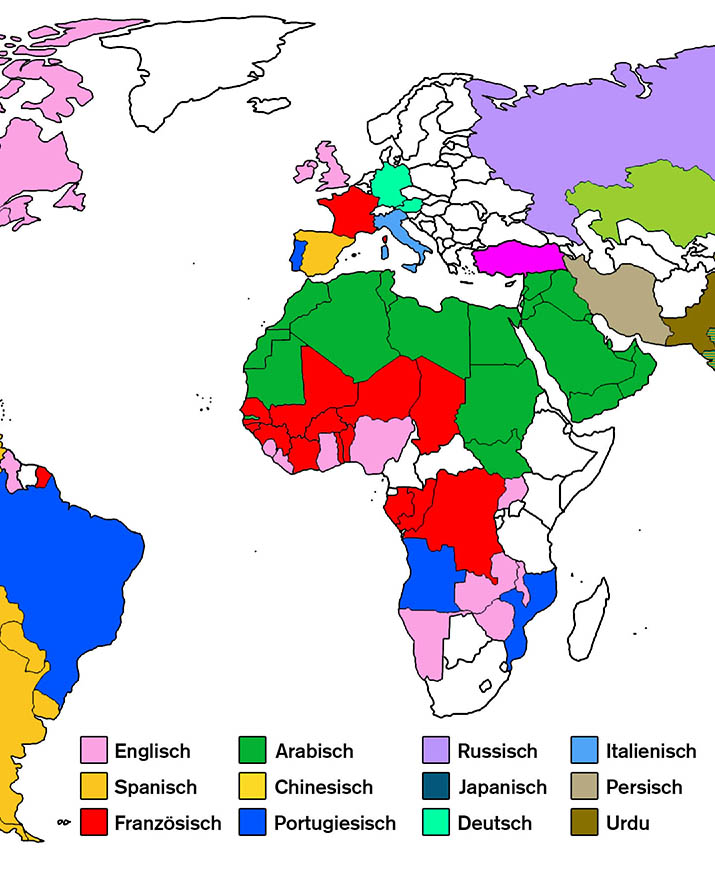Languages of the world
To know no foreign language, is to understand nothing of one’s own.
Johann Wolfgang von Goethe, Maximen und Reflexionen (Maxims and Reflections), 1833
Capacity for language – the varied and nuanced output of sounds by the anatomically complex interplay of the throat, mouth, nostils, gums, lips and tongue – is one of the most significant unique characteristics of humans. Linguistic communication occurred relatively early in the development of civilisation. Anthropologists believe that languages have been around for roughly 100,000 years and that they came to exist in their current form at the latest 40,000 years ago as a result of an enormous leap in technological and cultural development. Today linguistic researchers examine historical records to reconstruct extinct languages by comparing vocabulary and grammatical structures.
During the course of history an uncountable number of language systems has developed on earth. The time around 1500 was regarded as the zenith of linguistic variety – there were an estimated 10,000-15,000 languages in existence at the time. Currently there are more than 6,000, over half of these are threatened with extinction. The 50 most frequently used languages are spoken by 90% of the world with a consistent trend towards further linguistic consolidation. In Europe the Germanic languages are widespread in the north and the Romance languages dominate in the south, these languages spread further from the 15th century as part of discovery and settlement programmes on the American continent. In addition to naturally evolved languages there are also artificial languages such as the constructed international language Esperanto and also fictional languages such as Elvish and Klingon.

